#chinese archaeology
Photo
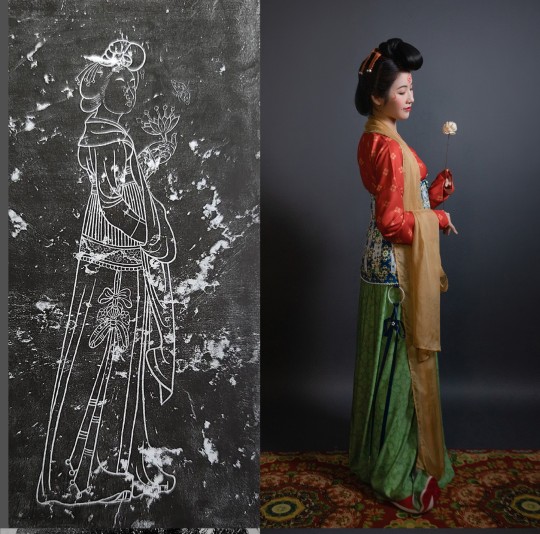

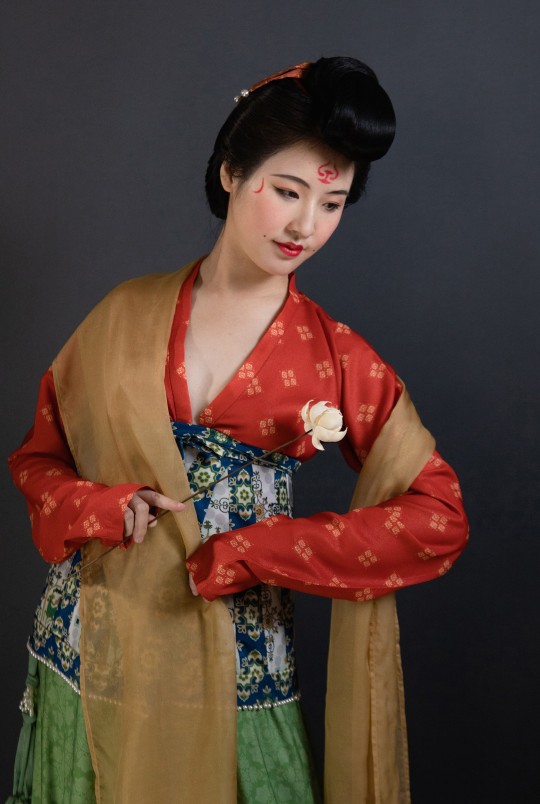
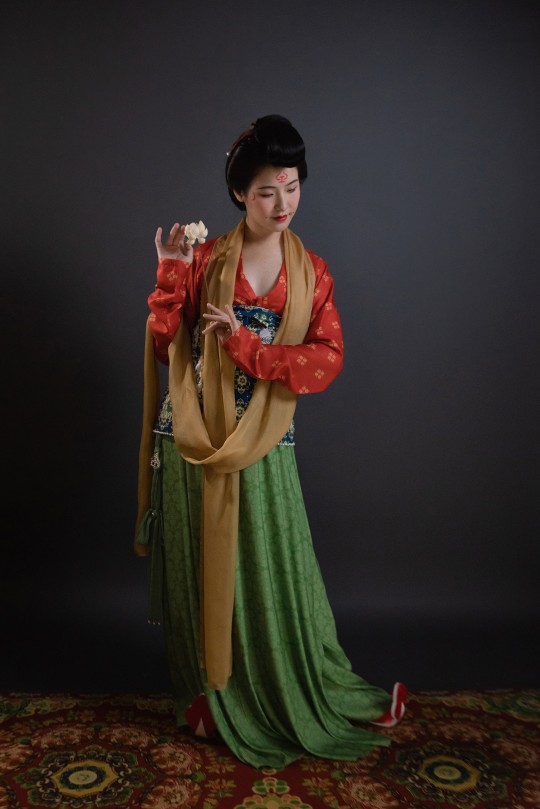
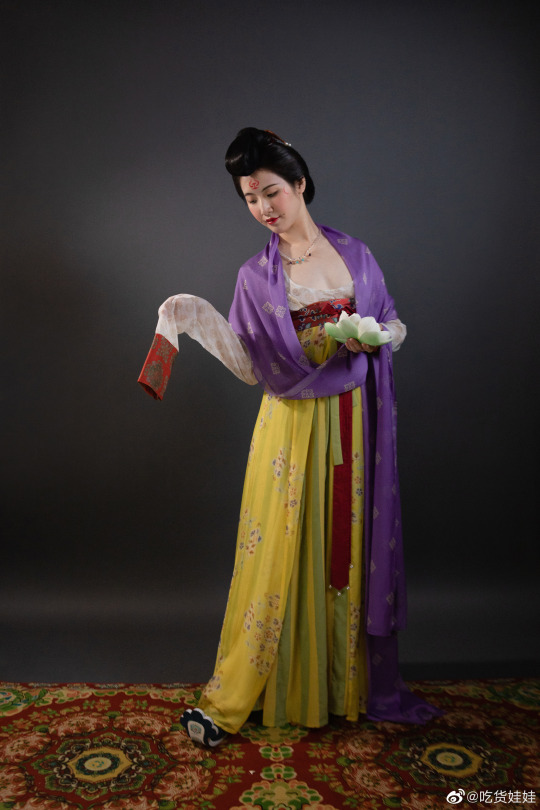
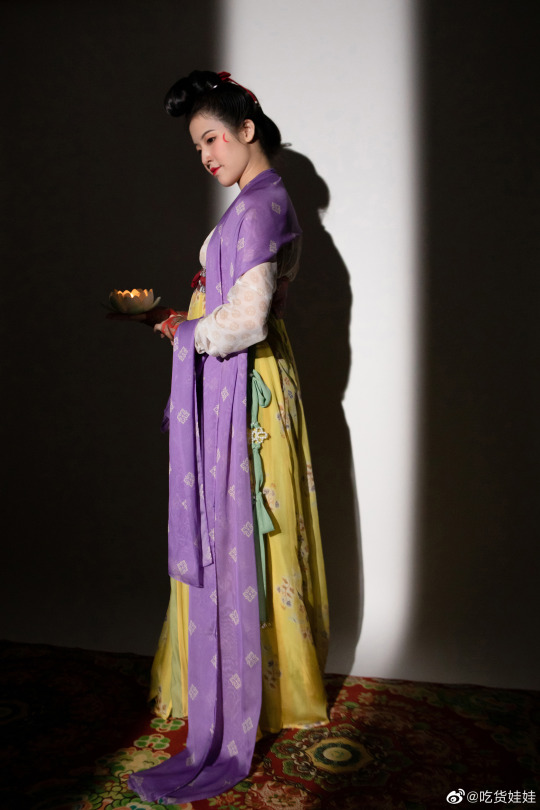
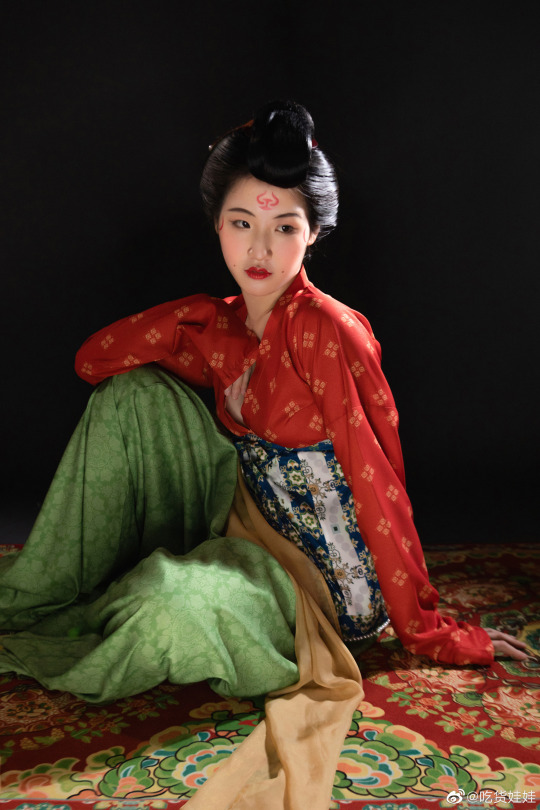
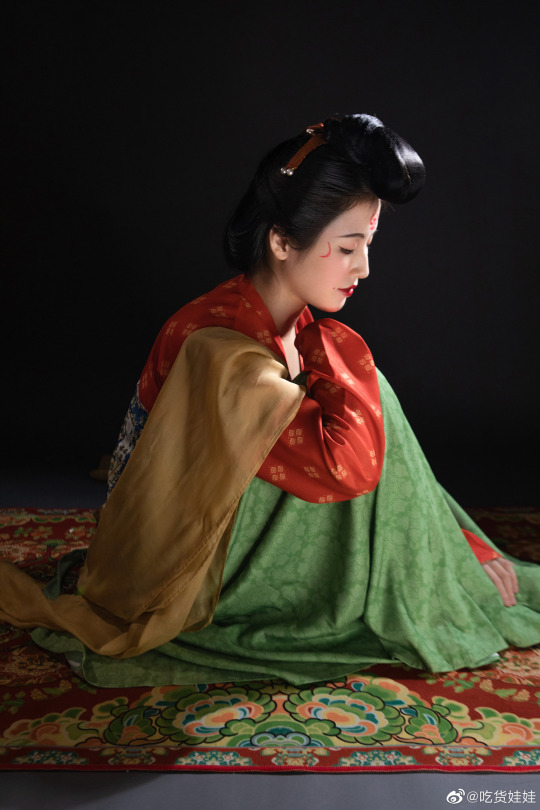


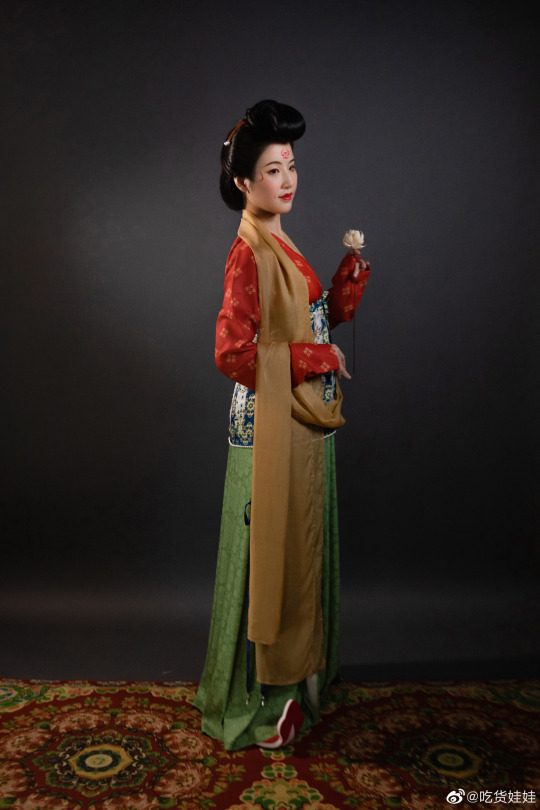
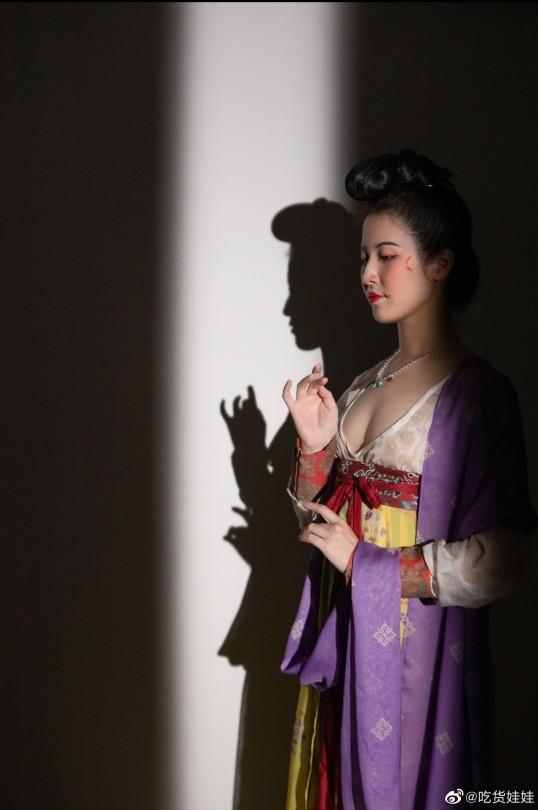
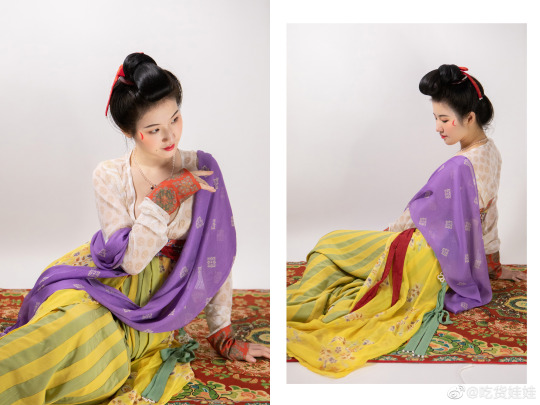
【Historical Reference Artifacts】:
Stone Carving from The Tomb of Xue Jing薛儆 (Emperor Ruizong's son-in-law) & Tang Dynasty Female Figurines:
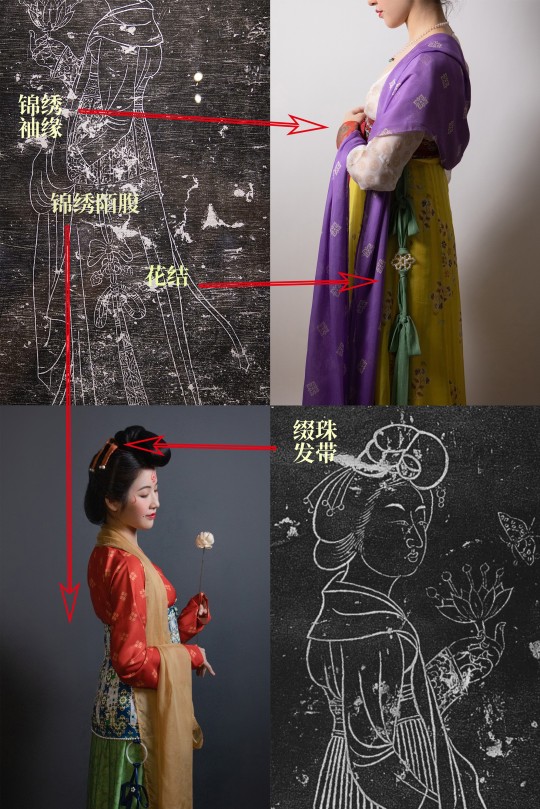



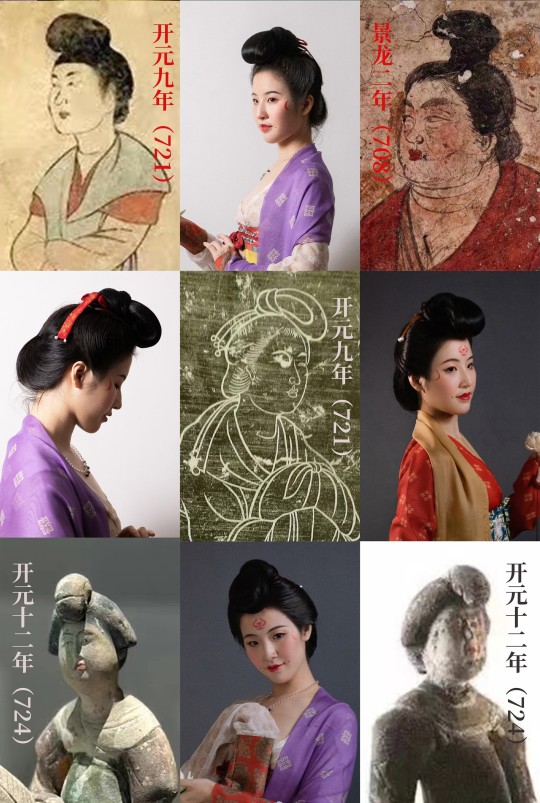

[Hanfu · 漢服]China Tang Dynasty (960–1127 AD) Chinese Traditional Clothing Hanfu & Hairstyle Based on Tang Dynasty Relics【沉寂千年的光阴】
Around the beginning of Kaiyuan period (708-724 AD) woman fashion & hairstyle
_______
Recreation Work :@吃货娃娃
🔗Weibo:https://weibo.com/1868003212/Mj46arcP9
_______
#Chinese Hanfu#Tang Dynasty (960–1127 AD)#beginning of Kaiyuan period (708-724 AD)#The Tomb of Xue Jing薛儆 (Emperor Ruizong's son-in-law)#锦绣袖缘#锦绣陌腹mofu#Huadian/花钿#裙背带#裙片掩合处#合围#背带#花结/flower knot#chinese traditional clothing#chinese historical fashion#Chinese Costume#chinese history#chinese archaeology#chinese culture relics#chinese art#Chinese Aesthetics#china#吃货娃娃#沉寂千年的光阴#hanfu#hanfu historical relic#hanfu history#漢服#汉服
223 notes
·
View notes
Text
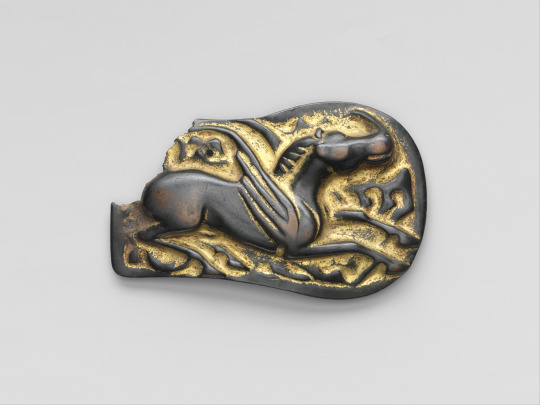

東漢(鮮卑文化) 鎏金翼馬紋銅飾板
~ Plaque with a Winged Horse.
Period: Eastern Han dynasty (25–220), Xianbei culture
Date: 1st century
Culture: North China
Medium: Gilt bronze
#ancient#ancient art#history#museum#archeology#ancient history#archaeology#china#chinese#ancient china#winged horse#horse#plaque with a winged horse#plaque#eastern han dynasty#xianbei#1st century
905 notes
·
View notes
Text
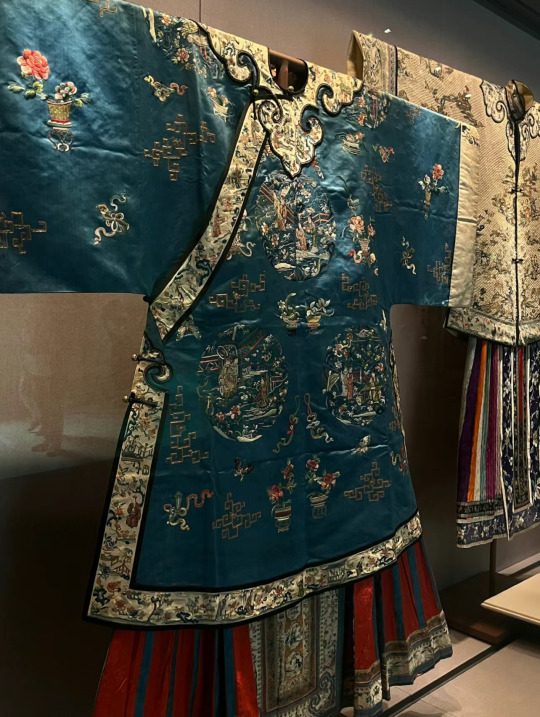
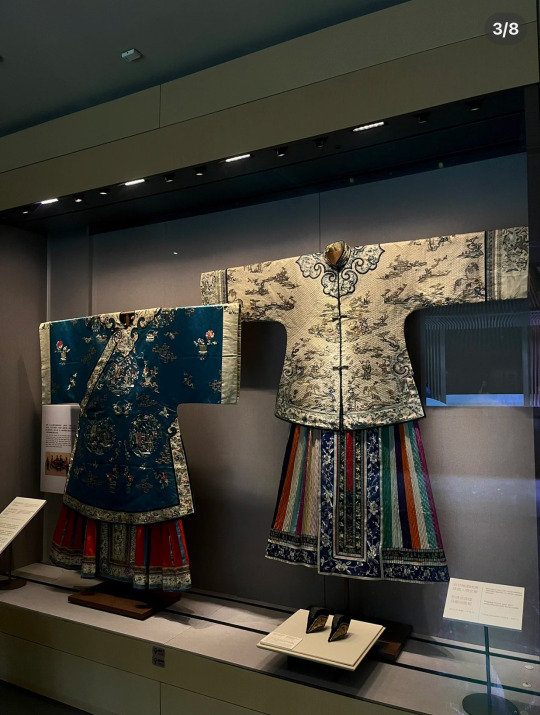
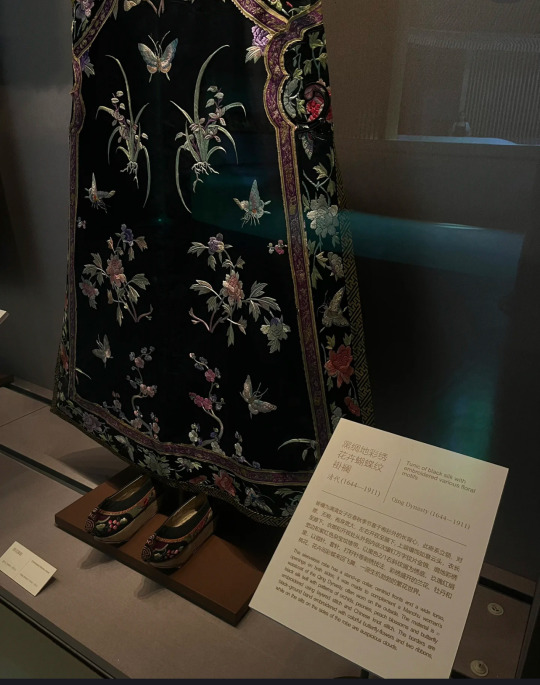
Qing Dynasty hanfu (1644-1912) Silk Museum of HangZhou (杭州丝调博物馆)
#china#chinese history#history#qing dynasty#education#language#archaeology#etymology#hangzhou#qing#artifacts#historical#historical clothing
226 notes
·
View notes
Text

Female Europid Mummy from the Necropolis of Subexi III, Grave M6, Turfan District, Xinjiang. 5th-3rd C. BCE. Source: Baumer, Christoph.The history of Central Asia. Vol.1. The age of the steppe warriors. London : I.B. Tauris, 2012. pg. 218 left DS329.4 .B38 2012. Image via University of Pennsylvania. See maps in the post before this one for a better understanding of the geography discussed.
"Section 26 – The Kingdom of Nearer [i.e. Southern] Jushi 車師前 (Turfan)
1. ‘Nearer Jushi’ 車師前 refers to the kingdom or state centered in the Turfan oasis or, sometimes, to the tribe which controlled it. There can be no question that Nearer Jushi refers here to the Turfan Oasis. See for example: CICA, p. 183, n. 618; also note 1.5 above. For the etymology of the name Turfan see Bailey (1985), pp. 99-100, which is summed up in his sentence: “The name turpana- is then from *druva-pāna- ‘having safe protection’, a name suitable for a walled place.”
“One other oasis town is currently under excavation. At Yarghul (Jiaohe), 10 km (16 miles) [sic – this should read 10 miles (16 km)] west of Turpan, archaeologists have been excavating remains of the old Jushi capital, a long (1,700 m (5,580 ft)) but narrow (200 m (656 ft)) town between two rivers. From the Han period they uncovered vast collective shaft tombs (one was nearly 10 m (33 ft) deep). The bodies had apparently already been removed from these tombs but accompanying them were other pits containing form one to four horse sacrifices, with tens of horses for each of the larger burials.” Mallory and Mair (2000), pp. 165 and 167.
“Some 300 km (186 miles) to the west of Qumul [Hami] lie [mummy] sites in the vicinity of the Turpan oasis that have been assigned to the Ayding Lake (Aidinghu) culture. The lake itself occupies the lowest point in the Turpan region (at 156 m (512 ft) below sea level it is the lowest spot on earth after the Dead Sea). According to accounts of the historical period, this was later the territory of the Gushi, a people who ‘lived in tents, followed the grasses and waters, and had considerable knowledge of agriculture. They owned cattle, horses, camels, sheep and goats. They were proficient with bows and arrows.’ They were also noted for harassing travellers moving northwards along the Silk Road from Krorän, and the territories of the Gushi and the kingdom of Krorän were linked in the account of Zhang Qian, presumably because both were under the control of the Xiongnu. In the years around 60 BC, Gushi fell to the Chinese and was subsequently known as Jushi (a different transcription of the same name).” Mallory and Mair (2000), pp. 143-144.
“History records that in 108 BC Turpan was inhabited by farmers and traders of Indo-European stock who spoke a language belonging to the Tokharian group, an extinct Indo-Persian language [actually more closely related to Celtic languages]. Whoever occupied the oasis commanded the northern trade route and the rich caravans that passed through annually. During the Han Dynasty (206 BC-AD 220) control over the route see-sawed between Xiongnu and Han. Until the fifth century, the capital of this kingdom was Jiaohe.” Bonavia (1988), p. 131.
“Turpan is principally an agricultural oasis, famed for its grape products – seedless white raisins (which are exported internationally) and wines (mostly sweet). It is some 80 metres (260 feet) below sea level, and nearby Aiding Lake, at 154 metres (505 feet) below sea level, is the lowest continental point in the world.” Ibid. p. 137.
“The toponym Turfan is also a variation of Tuharan. Along the routes of Eurasia there are many other place names recorded in various Chinese forms that are actually variations of Tuharan.” Liu (2001), p. 268."
-Notes to The Western Regions according to the Hou Hanshu. Second Edition (Extensively Revised and Expanded). John E. Hill. University of Washington.
#tocharian#celtic#indo european#tarim basin#xinjiang#chinese history#mummies#history#ancient history#archaeology#anthropology#silk road#pagan
458 notes
·
View notes
Text
youtube
Hey... psst... hey you... do you like museum tours? Walk-throughs? Well, you're gonna love this new video I made. Yeah, it's pretty good. I mean, the video quality is shit when it's trained on me, but the footage of the museum is good, and I think my commentary is interesting. Yeah, I think you'd enjoy it, make a cup of tea, and grab a snack for while you watch it. Great, thanks!
#history#museum#archaeology#youtube#chinese history#canadian history#american history#museums#art history#dark academia
86 notes
·
View notes
Text
video essays i adore (and you should watch)
when hollywood speaks chinese, i cringe
salvador dali's 'the persistence of memory': great art explained
nighthawks by edward hopper: great art explained
the baghdad battery? archeologist reacts! (reaction to & correction of awful archaeology ep 6: the baghdad battery)
remembering with a twist - a jojo rabbit & the book thief video essay
why is cottagecore so gay?
bo burnham's inside and "white liberal performative art"
overanalysing barbie movies with queer marxist theory
how white supremacists hide in plain sight
the constructive narrative of kitchen nightmares
life and death in medieval london with dr eleanor janega
the counteract: why the one direction fandom is predominantly queer
in search of a flat earth
the true horror of midsommar (feat. jack saint)
the rise and fall of abby lee miller part one (part two isn't up yet)
elvis (2022) and the mediocrity of bipocs
#rj speaks#i have so many more but this feels long already#video essays#idk how to tag this#hollywood#chinese#salvador dali#persistence of memory#nighthawks#edward hopper#baghdad battery#awful archaeology#jojo rabbit#the book thief#cottagecore#bo burnham inside#liberal perfomance art#barbie#marxist theory#queer#kitchen nightmares#white supremacy#medieval london#eleanor janega#one direction#flat earth#midsommar#abby lee miller#elvis (2022)
454 notes
·
View notes
Text
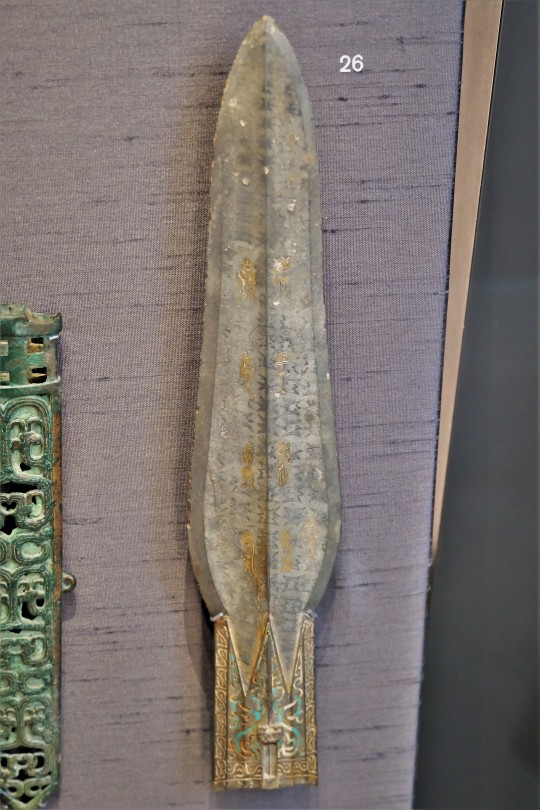
Spearhead from Zhejiang, China dated between 500-400 BCE on display at the British Museum in London, England
This spearhead is inlaid with an inscription, written in "Bird Script" a language to indicate ownership or date of completion and names the owner as King Zhu Gou of Yue (ruled between 448-412 BCE). The two most powerful stated in southeast China during the Spring and Autumn period (770-476 BCE), the Wu and the Yue were at war for years competing for supremacy.
There were numerous inter-state wars during the Eastern Zhou period (770-221 BCE) until all states were defeated by the Qin state, unifying China and forming the first i mperial dynasty.
Photographs taken by myself 2019
#archaeology#art#military history#ancient#china#chinese#bronze age#british museum#london#barbucomedie
69 notes
·
View notes
Text
"Can't even dig a subway in Xi'an. If you dig too shallow you find artifacts from Tang dynasty. If you dig too deep you find artifacts from Han dynasty."

#lol#china#xi'an#chang'an#archaeology#last time I was talking with coworkers about how I want to go to xi'an for their barbeque and history#they asked me is xi'an old and I was like yea it's been a few thousand years#i didn't get why they look so surprised i mean that's just chinese history#until they said that's older than a lot of countries and i was like yea you're right#i guess for many chinese people 2000 years are but a flash#maybe because we can still read stuff from >2000 years ago which really closes that gulf of time#written language ftw
68 notes
·
View notes
Text




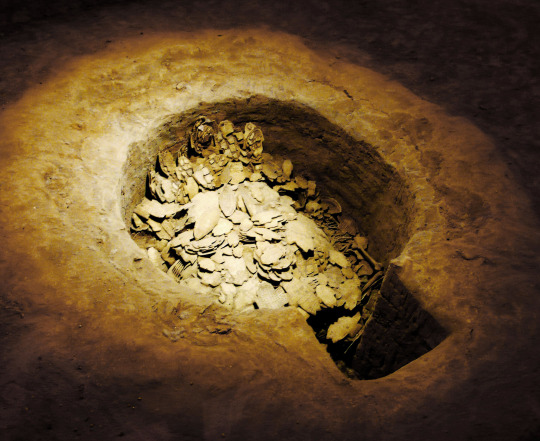
Wang Yirong – Scientist of the Day
Wang Yirong, a Chinese scholar, died Aug. 14, 1900, at the age of about 55.
Learn more
#Wang Yirong#dragon bones#Chinese writing#archaeology#histsci#histSTM#19th century#20th century#history of science#Ashworth#Scientist of the Day
19 notes
·
View notes
Photo
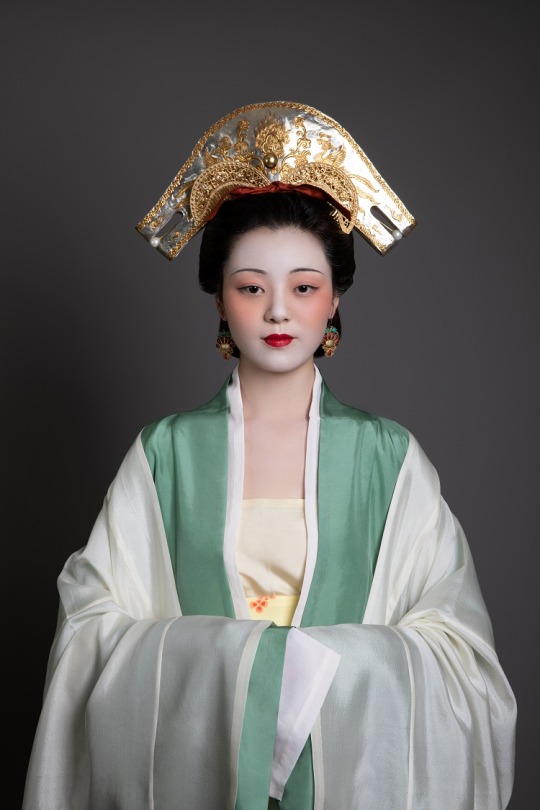

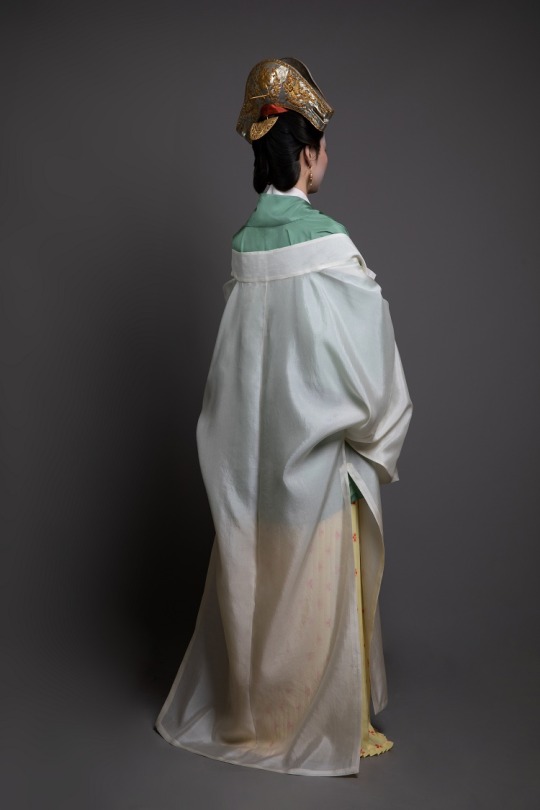

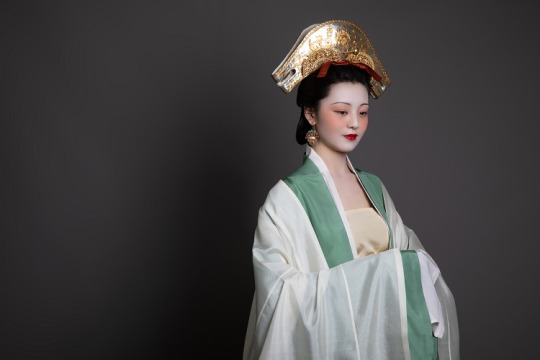
【Historical Reference Artifacts】:
Northern Song Dynasty Murals in Kaihua Temple(开化寺)
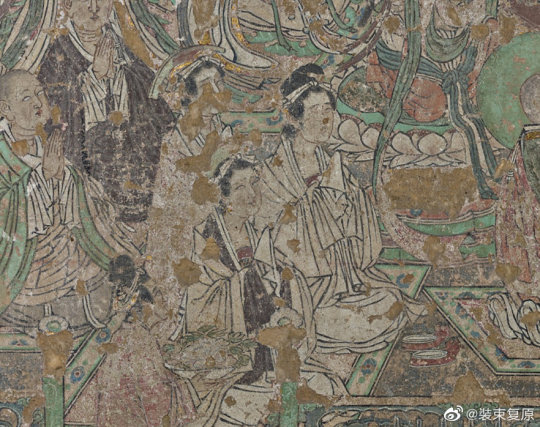
【Hairstyle Historical Reference Artifacts】:
This kind of crown is called " 等肩冠/equal shoulder crown" or " 垂肩冠/drop shoulder crown".It was a popular crown for Han women in the Song and Jin Dynasties.
※Names vary slightly depending on where the crown drop off
According to records in<Dream Pool Essays/夢溪筆談> By Chinese polymath and statesman Shen Kuo (1031–1095) in Northern Song Dynasty that about the tomb of officer Da sima (almost equal to defence secretary)Zhu Tuan (朱鲔)'s Tomb of Eastern Han Dynasty(25-220 AD) store carvings and said:
”Women also wear what is known today as the " 垂肩冠/drop shoulder crown", which is similar to the horned crown worn in recent years.There is almost no difference”.
It proves that this kind of crown may have appeared as early as the Eastern Han Dynasty(25-220 AD)
Stone Carvings of Zhu Tuan (朱鲔)'s Tomb in the Eastern Han Dynasty(25-220 AD)

・Northern Song Dynasty murals and stone carvings, & Jin Dynasty Zibo kiln Sancai figurines


[Hanfu · 漢服]China Mid-Late Northern Song Dynasty (960–1127 AD) Chinese Traditional Clothing Hanfu & Crown Based on Relics & Murals
----
【History Note】
After entering the mid-Northern Song period, women's attire gradually broke away from the extravagant style of "high bun and big hairpin" and "wide-sleeved long skirt", and replaced it with "wearing a crown and comb on hair" and "wearing drapedlong outer shirt and long skirts".
At this time, the volume of dresses is slightly smaller, and it is popular to wear multiple layers of clothing, and the neckline is widened to reveal the inner layer of clothing. It has a visual effect in layered and color-changing visual effects , In dignified and slightly revealing charming and graceful feelings.
At the same time, various styles of crowns have also been developed, some of which are almost as wide as the shoulders. People at the time called them "equal-shouldered crowns" or "drop-shouldered crowns" according to their shapes.
_______
📝Recreation Work:@裝束复原
👗Hanfu: @桑纈
🔗Weibo: https://weibo.com/1656910125/MeyZGi5WN
_______
#Chinese Hanfu#Mid-Late Northern Song Dynasty (960–1127)#等肩冠/equal shoulder crown#垂肩冠/drop shoulder crown#Song Dynasty#hanfu history#chinese archaeology#chinese history#chinese historical fashion#chinese historical hairstyle#hanfu#hanfu accessories#Chinese Costume#chinese art#Chinese Aesthetics#china#漢服#汉服#裝束复原#桑纈
214 notes
·
View notes
Text

臥馬紋銀帶飾
~ Belt Plaque in the Shape of a Crouching Horse.
Date: 3rd–1st century B.C.
Culture: North China
Medium: Silver
#ancient#ancient art#history#museum#archeology#ancient history#archaeology#belt plaque#crouching horse#horse#china#chinese#asian#asian art#3rd century B.C.#1st century B.C.
647 notes
·
View notes
Text
Someone recommend me places to start learning Chinese history (preferably at least a 1000 years old) as a complete and utter noob who's only aware of the 12th Kingdoms, saw Mulan a few times, and really likes Archaeology.
178 notes
·
View notes
Text
The meaning of 护甲套 (hujiatao) in Qing dynasty
护甲套 or in English “finger guards” where commonly used among women of the Qing Dynasty palace as a way to protect their fingernails.
The Empresses and concubines of the palace loved to grow their nails. Generally speaking, it takes over half a year to grow a nail an inch long so in order to protect the fragile nail and prevent it from breaking finger guards where added.
The women could wear them as they liked, on one finger or on one whole hand symmetrically while always leaving out the thumb as it needed to be unrestricted. The nail guards where usually made out of gold, jade, tortoiseshell ,copper, enamel and other materials.
The front of the nail guards are beautifuly and heavily decorated with engravings and jades while the back stays just carved, rarely sealed as to prevent it from feeling stuffy during the summer.

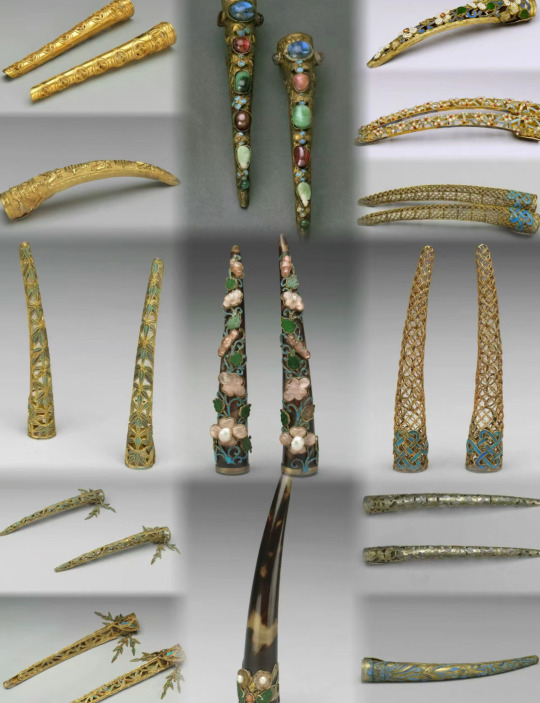
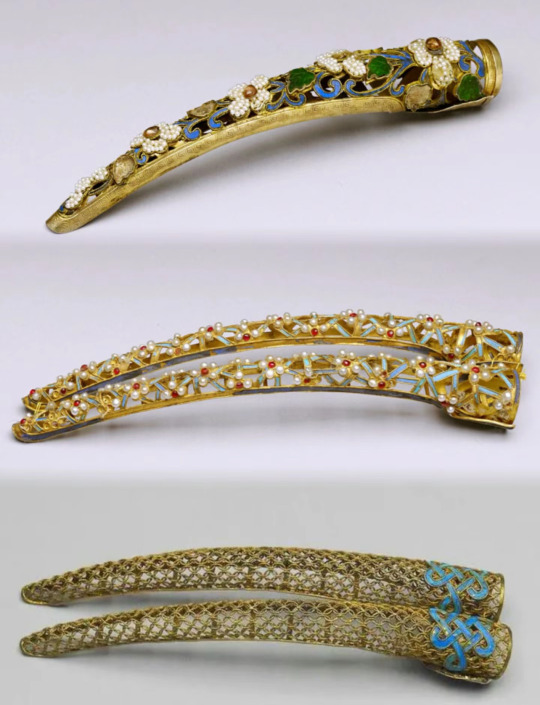
also ps guys i’m not a bot AHAHAHAHA💀
104 notes
·
View notes
Text
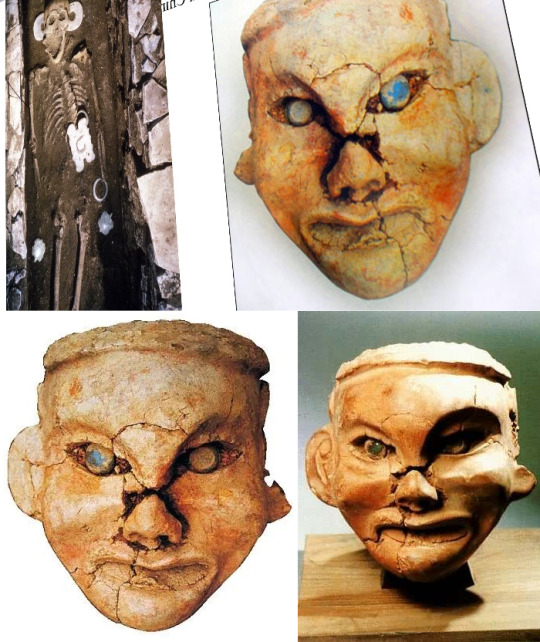


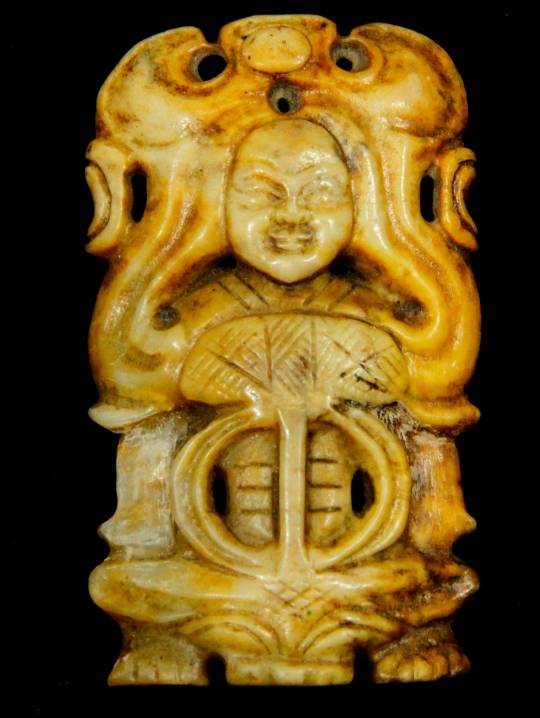


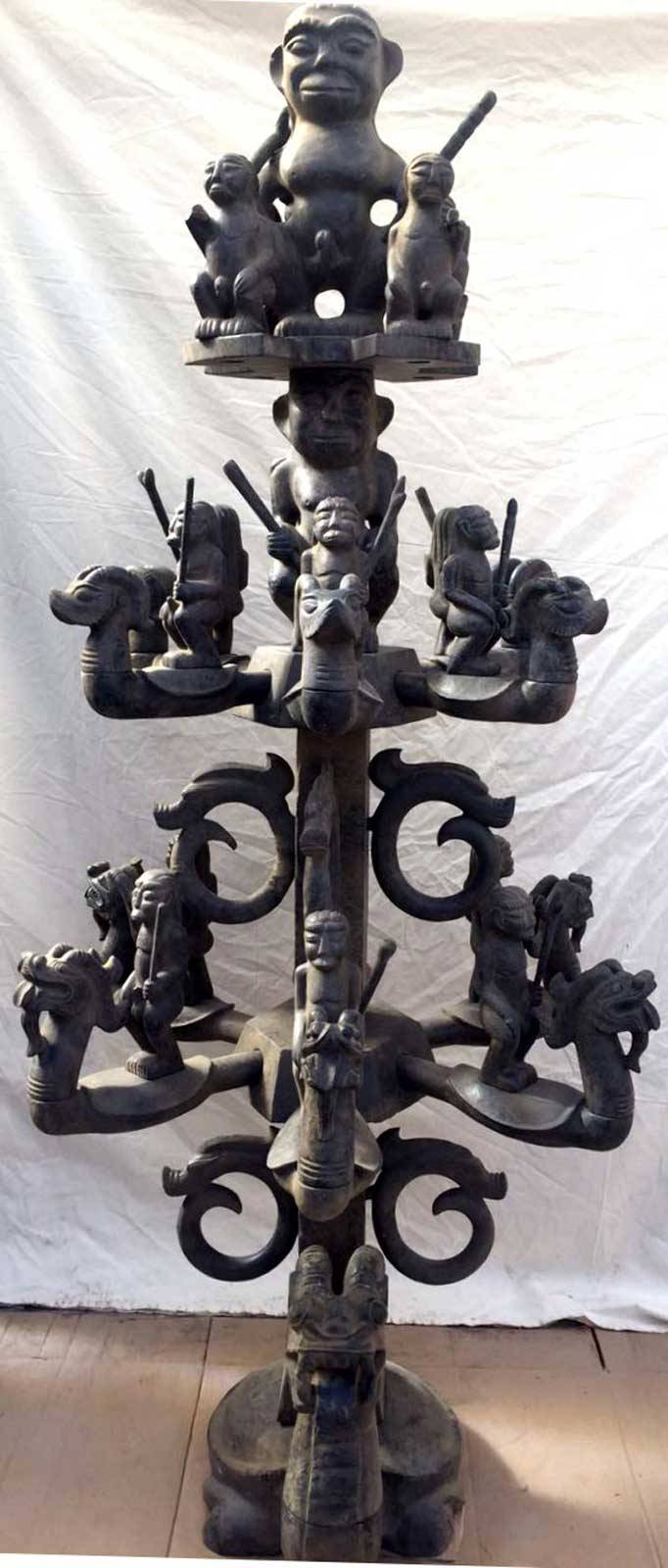

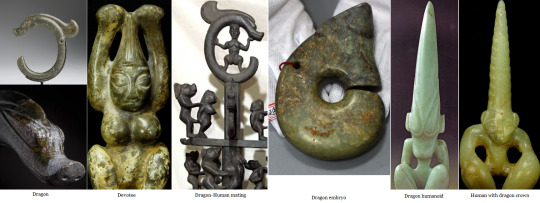



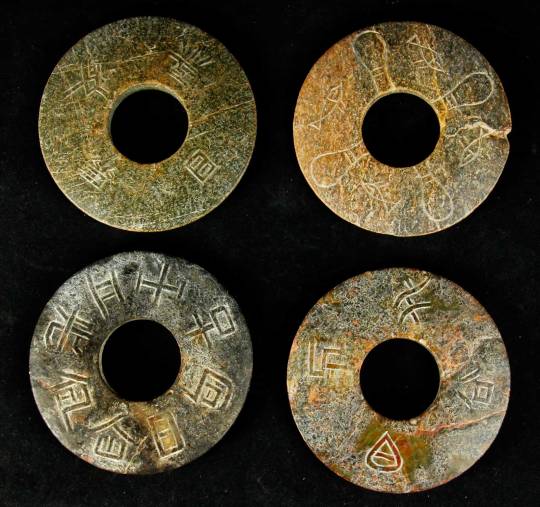




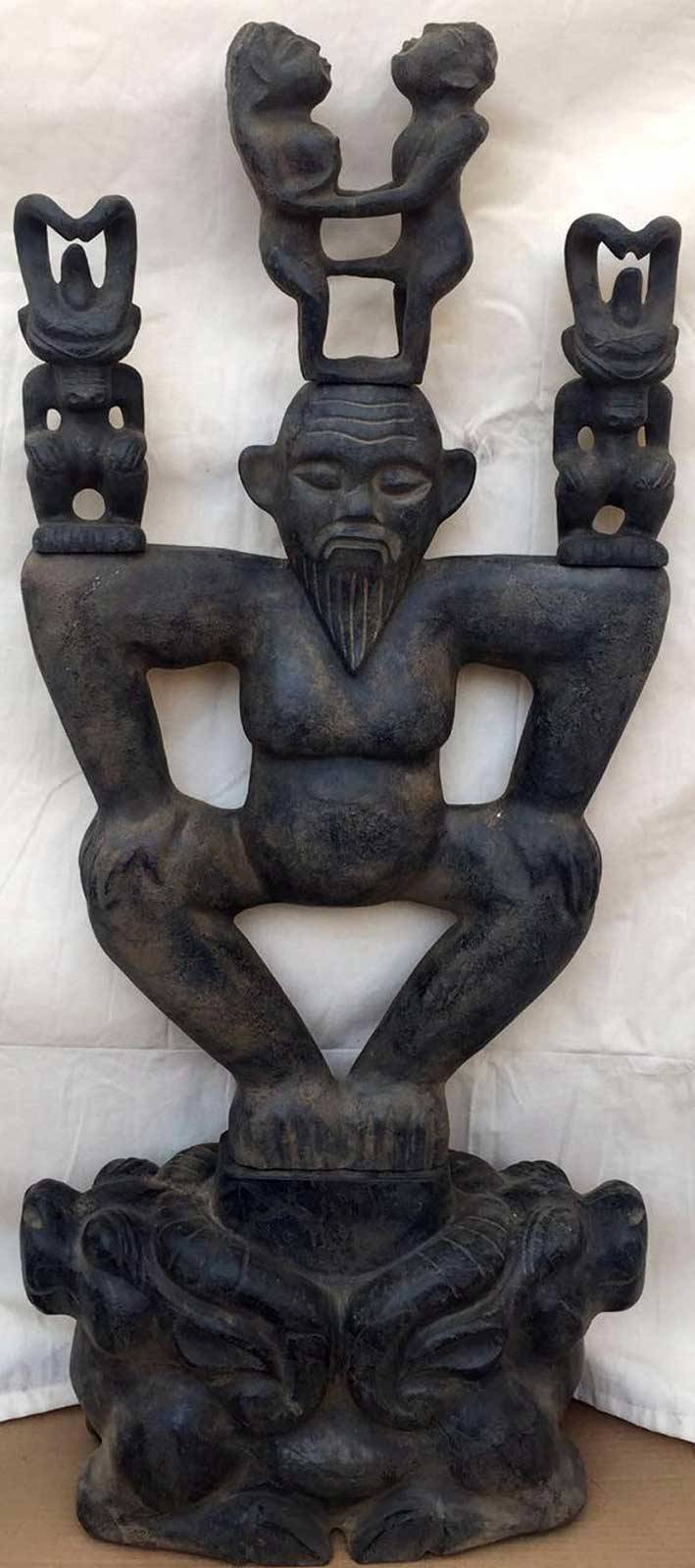

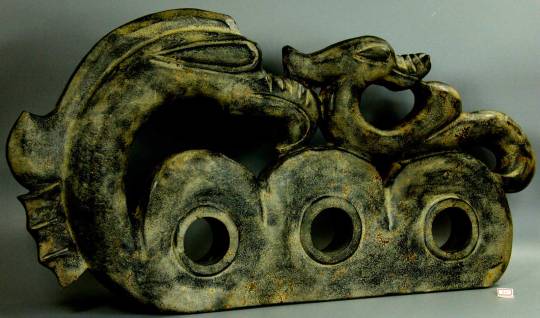
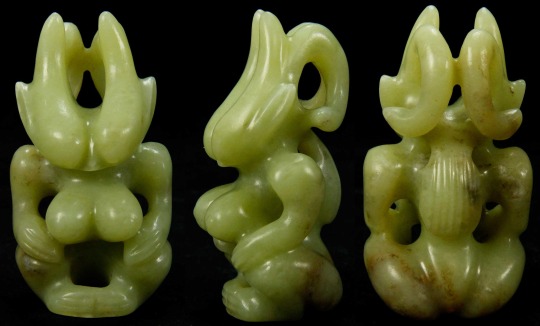






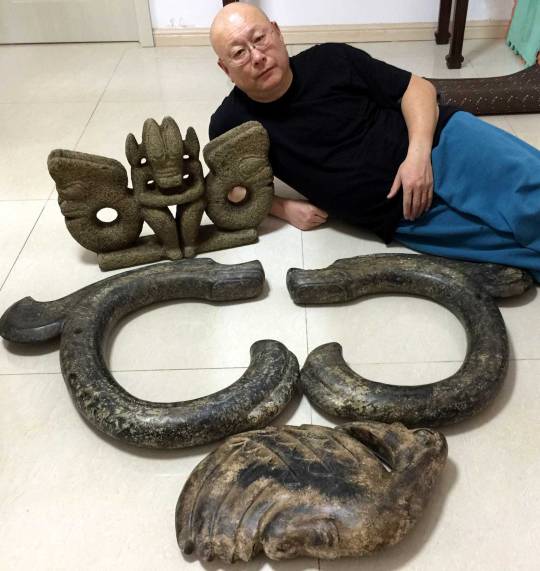

Neolithic Hongshan Culture 4700 to 2900 BCE
I'm just going to do a summary post on all these Hongshan artworks here. Hongshan seems to have artwork depicting both Caucasoid and Mongoloid people. One of them has large, deep-set blue jade eyes and doesn't look anything like modern day Chinese people. However, there are also a lot of figures that do look like modern day Chinese people. It would seem there was a variety of different people living in the area. There are also a large variety of depictions of dragons and what appear to be dragon-human hybrids, as well as dragon embryos. Some statues appear to show mating between humans and dragons or other creatures. It's possible these statues tell stories of humans claiming to be descended from dragons. See my other Hongshan post (Dragon of the Hongshan Culture 4500-3000 BCE) for more info on genetic curiosities.
More images on my blog: https://paganimagevault.blogspot.com/2023/08/neolithic-hongshan-culture-4700-to-2900.html
#chinese history#dragons#ancient history#history#anthropology#art#statue#ancient art#archaeology#neolithic
98 notes
·
View notes
Text
school update #2 ! week 2 (so far)
mini rant:
why do professors who have professed for a long time do the thing where they use very specific field terminology without ever explaining what the words mean and expect everyone to know whats going on? i have 2 that do that rn & they are both classes without prereqs and specifically state you dont need any background in related fields to take the course lol
classes:
ethnomusicology - he tried to make us sing the other day, & i get its a music based class but its also an 8 am seminar for non music majors, my anxiety will not let me do that lol. otherwise seems really interesting so far and im excited for some of the projects listed in the syllabus.
dinos - not fully understanding the geology parts of this class so far. we were also assigned a group project where we have to go fossil hunting but none of my group members answer my texts so 🤷🏻♀️. enjoying reading the textbook a lot. also why does being in a larger room for class make it so much harder to focus?
bio anthro - not as bad as i expected. hearing my professors talk about their research as archaeologists is reallly cool. hate this classroom as well tho lmao
cultural anthro - we havent really done anything yet lol no updates tbh
archaeology - current fav. think im gonna be volunteering in the campus archaeology lab starting at the end of the month to help catalogue artifacts. excited for my textbook to get here tomorrow bc its the only physical one i got.
other things:
am in the process of setting up a semester abroad for summer 2024! already met with the office, chose a program, and have another meeting friday to apply for scholarships and get transfer credit approval :D fingers crossed i get accepted to the program i want
#studyblr#study blog#langblr#langblog#chinese langblr#language learning#languageblr#mandarin langblr#anthropology#anthro#japanese langblr#korean langblr#cultural anthropology#archaeology#ethnomusicology
9 notes
·
View notes
Text
Ancient Chinese woman faced brutal 'yue' punishment, had foot cut off, skeleton reveals

Nearly 3,000 years ago, the foot of a Chinese woman was cut off in an amputation — probably not for a medical condition, but as punishment for committing a criminal act, a new study of her bones suggests. It's one of the few times archaeologists have discovered evidence of yue, an ancient Chinese punishment.
Various clues hint that the woman's foot was cut off as yue: her bones show no signs of any disease that could have made such an amputation necessary; and it seems the injury was roughly made, rather than with the precision of a medical amputation.
The researchers considered other possibilities for how the woman might have lost her foot, such as from an accident, a war injury or a surgical procedure, study lead author Li Nan, an archaeologist at Peking University in China, told Live Science. But "after careful observation and media discussions, our research team ruled out other possibilities and agreed that punitive amputation is the best interpretation," Read more.
122 notes
·
View notes